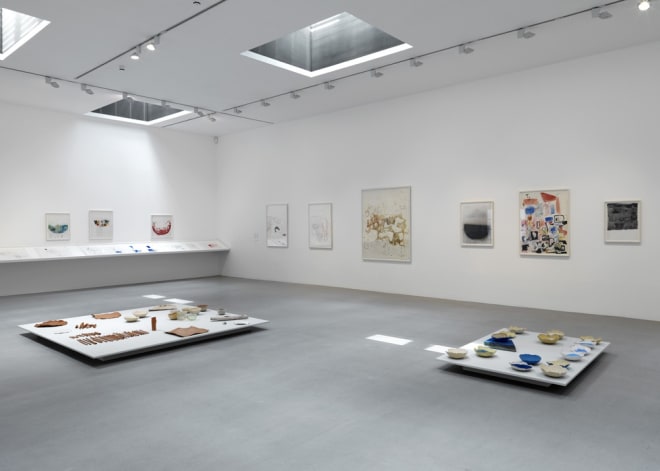Shelagh Wakely was part of the alchemy of the British Sculpture Movement of the 1980s, with fellow artists Richard Deacon, Shirazeh Houshiary, Barry Flanagan and Anish Kapoor, amongst others. With a prolific career spanning more than four decades, Wakely produced an impressive body of work comprising sculpture, installation, drawings, prints and video. A pioneer of installation art, her artworks are illusionary plays on perception that disturb patterns of thinking and seeing and are characterised by tender marks, ghost-like and evanescent, made with a variety of media: from clay to wire, cut silk to gilded fruit, ink on paper to canvas. Despite the diversity of her work, her oeuvre circles around a cluster of themes relating to fragility, time, aging and decay, all united by her singular interest in 'the surface' - as a shield, a barrier, a sign, a veneer. Her sensuous work was also inspired by the flamboyant and lavish decorations of Brazil, along with the work of Brazilian artist Tunga (1952-2016), with whom she collaborated in the 1990s.
Wakely was born in a small village in England and spent much of her youth in Kenya surrounded by ecologists and natural scientists. After a spell as a research agronomist, she turned to the arts, studying painting and screen-printing at the Chelsea College of Art (1958-1962). Wakely worked as a textile and clothing designer in the 1960s but a research fellowship at the Royal College of Art (1968-1971) led her to sculpture. Early exhibitions were held at the Serpentine Gallery, London, UK (1977); Institute of Contemporary Art, London, UK (1979); The John Hansard Gallery, Southampton, UK (1982); and The Showroom, London, UK (1989). Her work was posthumously featured in a solo exhibition 'A View from a Window' at Camden Arts Centre, London in 2014 and was included in Manchester Art Gallery's group exhibition 'Speech Acts: Reflections-Imagination-Repetition' in 2018; in 'Psychic Wounds: On Art and Trauma' at The Warehouse, Dallas, in 2020-2021; as well as recenlty in 'A Very Special Place: Ikon in the 1990s' at the Ikon Gallery, Birmingham, until 30 August 2021.
Later in her career, she worked on numerous outdoor installations, including Rainsquare at South London Gallery (1994) and other public commissions for the Royal Albert Hall, London, UK (2001); Marunouchi Building, Tokyo, Japan (2002); Beckenham Beacon Hospital, Kent, UK (2009); and Nottingham University Hospital City Campus, Nottingham, UK (2010).

